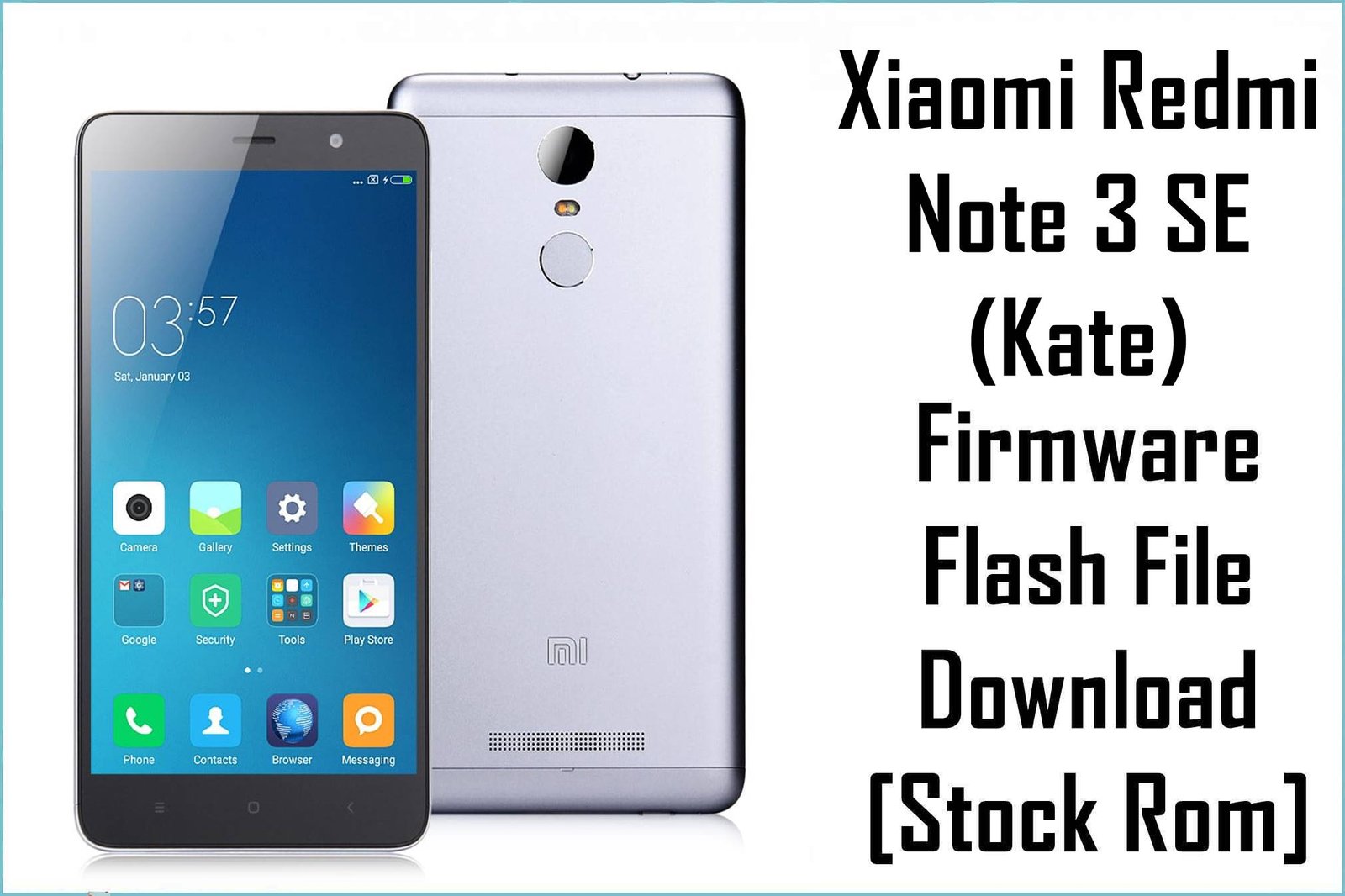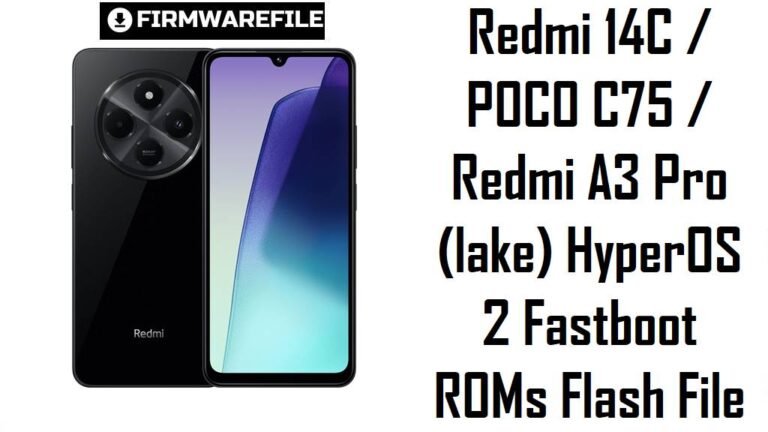Xiaomi Redmi Note 3 SE (Kate) Firmware Download: Official Global ROM & Band 20 Fix
Redmi Note 3 Special Edition (codename kate) is the global variant of the iconic Redmi Note 3, distinguished by its added 4G Band 20 (800MHz) support for better European coverage. Known for its Snapdragon 650 performance and enduring custom ROM community, it remains a popular device. If your device is experiencing bootloops, Wi-Fi drops, or fingerprint sensor failures, flashing the correct stock firmware is the first step to a cure. This page provides the official global fastboot ROM and a stable Xiaomi.eu ROM.
Important: The ‘kate’ variant is often confused with the ‘kenzo’ Redmi Note 3. While similar, they have different modems and fingerprint sensors. Flashing ‘kenzo’ firmware on ‘kate’ will break these features. Always confirm your codename is kate before flashing.
Quick Device Specs
- Device: Redmi Note 3 Special Edition (kate)
- Release year: 2016
- Chipset: Qualcomm Snapdragon 650 (MSM8956)
- Display: 5.5″ IPS LCD, 1080p
- Battery: 4050 mAh
- Key Feature: 4G LTE Band 20 support
- Original OS: Android 5.1, MIUI 7
- Final Official MIUI: MIUI 10 (Android 6.0 Marshmallow)
Required Downloads
| File / Tool | Download Link |
|---|---|
| Xiaomi Mi Flash Tool | Download Latest Version |
| Qualcomm HS-USB QDLoader 9008 Driver | Download Driver |
| Bootloader Unlock Tool | Official Mi Unlock Page |
| ADB and Fastboot Tools | Download from Google |
Fastboot ROMs & Tools
| Type | Build / Version | Android | Release Date | Download | Size |
|---|---|---|---|---|---|
| Global Stable | V10.2.1.0.MHRMIXM | 6.0 (Marshmallow) | 2019-01-14 | Download | ~1.5 GB |
| Xiaomi.eu (Custom) | V10.2.1.0.MHRMIXM (Based) | 6.0 (Marshmallow) | — | Download | ~1.0 GB |
How to Flash via Fastboot (Mi Flash Tool)
- Unlock your bootloader using the official Mi Unlock tool. This is mandatory.
- Extract the downloaded .tgz firmware file to a folder on your PC.
- Open Mi Flash Tool. Click Select and choose the extracted ROM folder.
- With your phone powered off, boot into Fastboot mode (Hold Volume Down + Power). Connect it to the PC.
- In Mi Flash Tool, choose the clean all option. Avoid “clean all and lock” unless you are 100% sure you are on the correct stock ROM and wish to relock.
- Click Flash and wait for the process to complete. The first boot may take several minutes.
FAQs
Q1. What is the difference between Redmi Note 3 ‘kenzo’ and ‘kate’?
‘Kate’ is the Special Edition (SE) global variant. Its key difference is the addition of LTE Band 20 (800MHz), which is crucial for coverage in many European countries. The ‘kate’ firmware includes a different modem firmware to support this. Flashing ‘kenzo’ ROM on ‘kate’ will remove Band 20 support.
Q2. Why did my fingerprint sensor stop working after flashing a custom ROM?
This is a common issue on both kenzo and kate. The fingerprint sensor (FPC vs Goodix) requires specific proprietary blobs (vendor files). The stock ROM includes both. Many custom ROMs can have issues with the Goodix sensor. Flashing back to this stock ROM will always restore full fingerprint functionality.
Q3. My Wi-Fi and Hotspot are not turning on. What can I do?
This is typically a hardware issue on aging Redmi Note 3 devices, often related to a failing Wi-Fi/BT chip. However, it can sometimes be caused by a corrupted persist partition. Flashing the stock ROM can restore the partition and rule out software causes. If it persists, it’s likely a hardware fault.
Q4. Can I upgrade to a newer Android version?
Officially, no. The device stopped at Android 6.0. However, it has one of the most active custom ROM communities. You can install numerous custom ROMs like LineageOS 18.1 (Android 11) that offer excellent performance and modern features, though you may need to troubleshoot fingerprint and camera functionality.
Troubleshooting (Kate-Specific)
- “This package is for ‘kate’ devices; this is a ‘kenzo’.”: You are trying to flash a ‘kate’ ROM on a ‘kenzo’ device, or vice-versa. This error is a safeguard. Immediately stop and download the correct firmware for your device’s codename.
- Baseband/IMEI unknown after flash: This indicates a corrupted
persistorefspartition. Flashing the correct stock ROM often fixes this. If it doesn’t, you may need to restore an earlier backup of these partitions made from your specific device, which is complex without a backup. - Mi Flash Tool throws “error: Not catch checkpoint”: This usually means the path to your extracted ROM folder contains spaces or non-ASCII characters. Move the folder to a simple path like
C:\kate_romand try again. - Device boots directly to Fastboot or Recovery: This usually indicates that the
boot.imgis corrupted or the device was previously encrypted. In Mi Flash Tool, ensure you selected the clean all option, not “clean all and lock”. Then, boot into stock recovery and perform a factory reset. - Fingerprint sensor not detected in settings: If you flashed a ‘kenzo’ ROM by mistake, the Goodix fingerprint driver will be missing. You must flash the correct ‘kate’ global ROM to get the full hardware support back.







